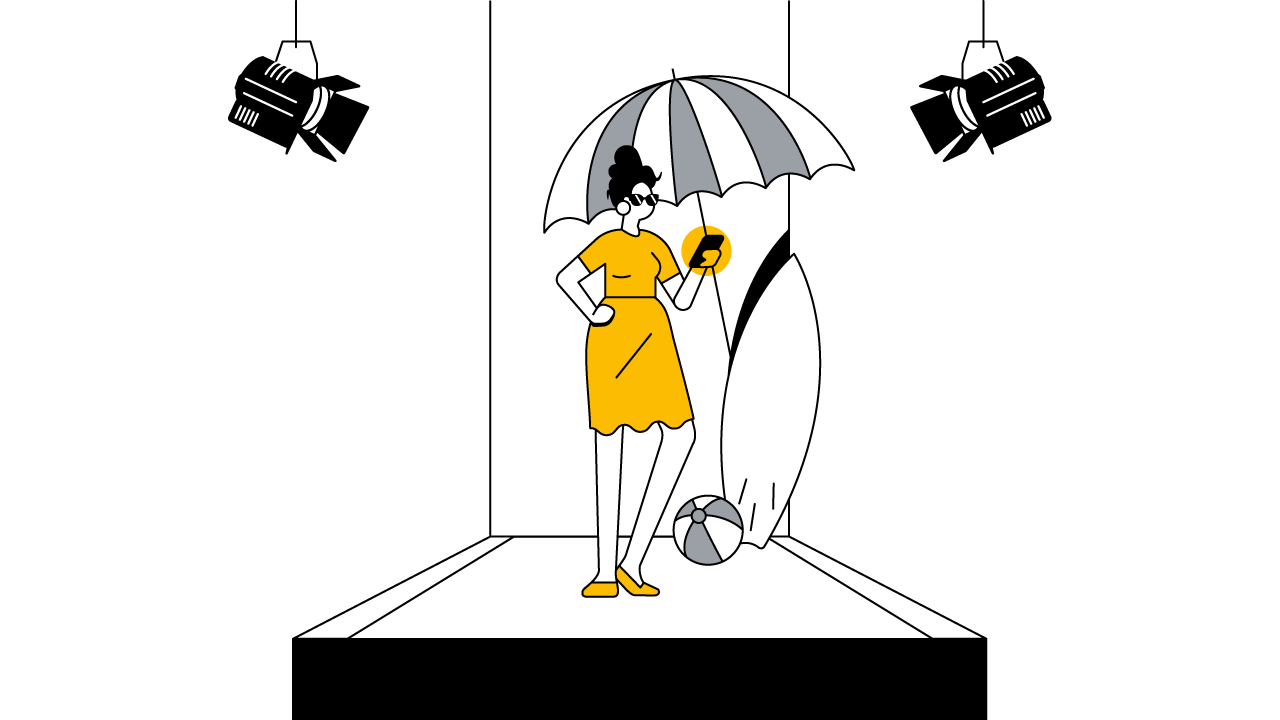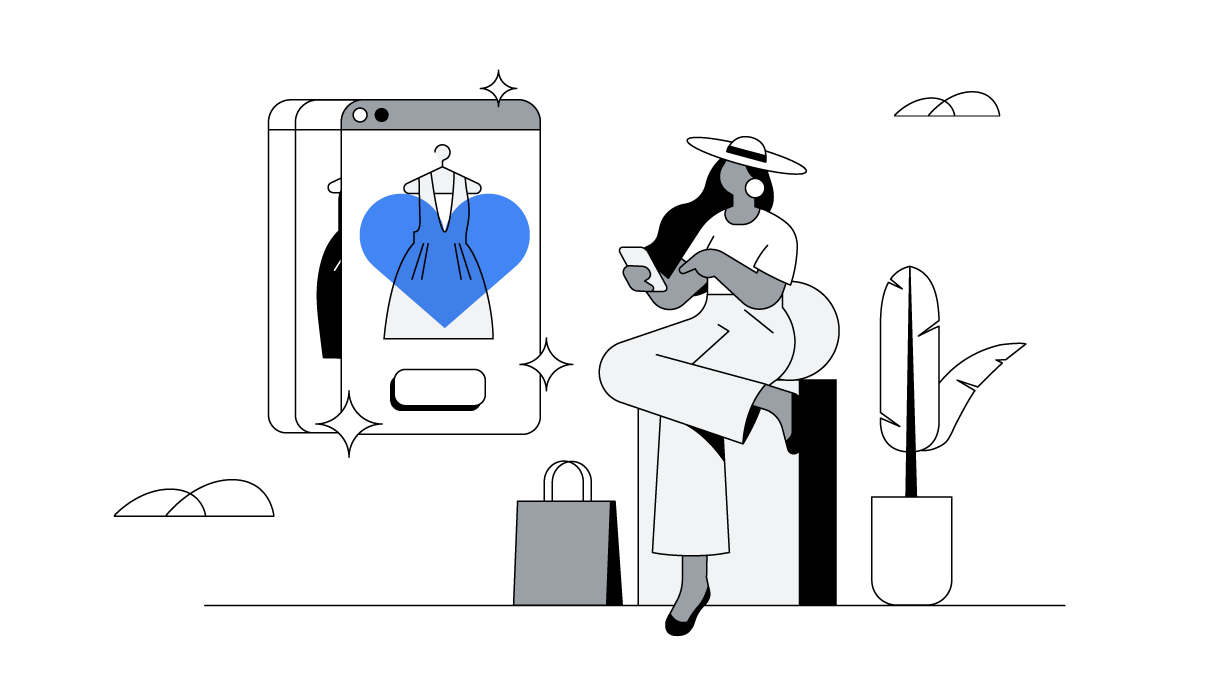The retail industry has been in a state of massive upheaval over the last two years. COVID-19 forced stores to shutter, which in turn led to a sharp surge in online purchasing. On average, 33% of retail sales in Great Britain are now made online, up from 19% in 2019, according to the latest data from the Office for National Statistics.
Our online retail searching and browsing habits have also evolved as people seek the window-shopping experience in the digital world. Google Search was previously perceived as a post-research destination – but has now become a first port of call for consumers looking for inspiration and ideas. Many companies have found that taking a more visual approach to search advertising has become increasingly effective and paid huge dividends.
We caught up with four leading retailers that are using visual online marketing, machine learning, and automated solutions in their campaigns to help navigate the continually shifting retail landscape. Here's what they've learned:

Samsung: Using machine learning to reach the right customer at the right time

“This past year we’ve seen significant changes in the path to purchase, with more consumers buying directly from our site. This switch to direct-to-consumer (DTC) elevated the role of digital in our commercial business objectives, with increased spend and focus on return-on-investment (ROI) from paid search.
“Having an ‘always on’ performance marketing plan and allowing machine learning to optimise our search activity, such as bidding and messaging, has proved key. For example, with Smart Shopping campaigns, we know we are promoting our products to the right customer at the right time.

“This has translated into both increased volume and improved efficiency — expanding our reach 4X and increasing our ROI by more than 40%. Relying on automation to simplify campaign management has also freed up time to focus on the bigger picture and new avenues for growth.”
Allowing machine learning to optimise our search activity, such as bidding and messaging, has proved key.
Action for marketers: Use automation to react to changing demand
Automation is table stakes when it comes to finding consumers online who are more likely to convert and spend. With Smart Shopping campaigns, machine learning uses your product feed to create and optimise a variety of ads across different networks and automatically show the relevant creative to consumers.
Marks & Spencer: De-risking international growth

“Direct-to-site and online marketplaces are rapidly taking over the role of brick-and-mortar. This, and a general shift to online sales, is a trend we expect to see continue on a global scale, irrespective of the pandemic.
“In the past 18 months, expanding into international markets to capture this growing online demand has been a key goal. The challenge has been doing so with minimal risk and low operational costs.
“Automation is central to this process — the tools available with Smart Shopping campaigns have allowed us to get an accurate read on demand in our new entry markets. It’s also driven sales based on target return on ad spend (ROAS), all at a speed and scale we couldn’t achieve with human teams alone.
“The results have been transformative. Overall, conversion rates have increased 58% and cost per click is down 48% compared to our former standard shopping campaigns. In turn, this has created significant gains through working efficiencies as well as driving stronger revenue.”
The shift to online sales is a trend we expect to see continue on a global scale, irrespective of the pandemic.
Action for marketers: Automate to counter unpredictability
Entering new markets can be high risk. Use Smart Shopping to build highly reactive campaigns, tailored to specific territories and using real-time insights from Search. This ensures your bidding strategy and ad investment is matched to current local demand and robust enough for changes in market conditions.
Mattel: Driving results with partners

“We know toy shoppers are increasingly buying online — and the onset of COVID-19 has certainly expedited this trend. It’s essential, from a consumer perspective, that we ensure our brands and products are highly visible when they are ‘in market’. That means up-weighting investment to online platforms and using automation to show-up where consumers are choosing to spend more of their time.
Our goal was two-fold: support consumers’ online shopper journeys and introduce clarity on Mattel’s ROI of digital campaigns with retailers. Through Shopping campaigns with partners, we’ve been able to join forces with our retail partners in new and effective ways. This meant we could align budgets to promote specific products and use shared reporting and analytics to gain a detailed understanding of our digital ad investments.
“Automation has given us full transparency and clear ROI on joint campaigns. And — using machine learning to optimise creative and ad placement — we’re reaching consumers who are signalling their purchase intention across Google properties, making our budgets stretch further.
It’s essential, from a consumer perspective, that we ensure our brands and products are highly visible when they are ‘in market’.
Action for marketers: Combine budgets to extend campaigns
With traditional in-store promotional partnerships impacted by the consumer pivot to digital, increase visibility of specific products online by using Shopping campaigns with partners. This allows brands to use their own budgets to fund Shopping campaigns with their retailers.
Look Fantastic: Testing and learning with partner brands

Beauty consumers are changing: convenience has gone from being a luxury to a necessity. We have seen new shopping habits emerge with our existing customers — for example, a notable move towards sustainable and cruelty-free-first products — and a marked shift to digital among slightly older demographics. Such change requires an agile approach and willingness to test and experiment.
Using automation in our advertising, we have established more nimble and collaborative relationships with our brand manufacturer partners. Together, we have run co-marketing test campaigns, optimising for ROI and sharing the resulting data.
Brands that were already digital-first were quick to come on board and run tests. Straight away, we had some revealing results — notably, higher price point brands saw more favourable ROAS with the effectiveness of visual ad formats cutting through. With these insights and demonstrating return on investment, we have now rolled out Shopping campaigns across the business.
Beauty consumers are changing: convenience has gone from being a luxury to a necessity.
Action for marketers: Grow retail partnerships with testing and scaling
It pays for retailers to extend digital ad partnerships to all their brand manufacturing partners, no matter their size. Use automation to reach the right audience at the right time and get maximum value out of any partner or joint budgets. Utilise testing and performance data to make a transparent business case for scaling partnerships where resource allows.
With shoppers increasingly influenced by product images when it comes to making purchases online, apply visual ad formats to inspire and engage — especially on search, the shop window of the internet.






